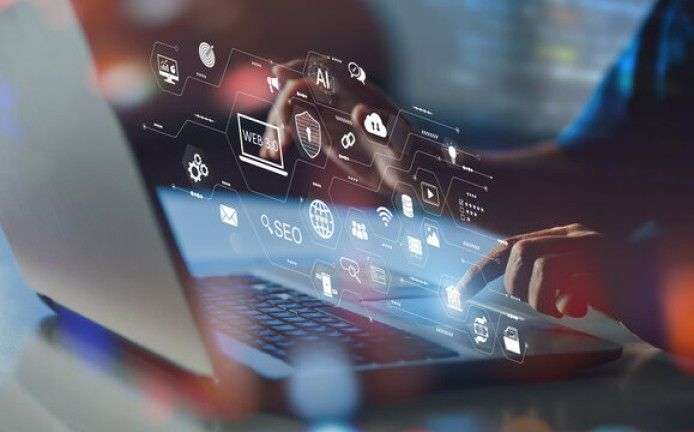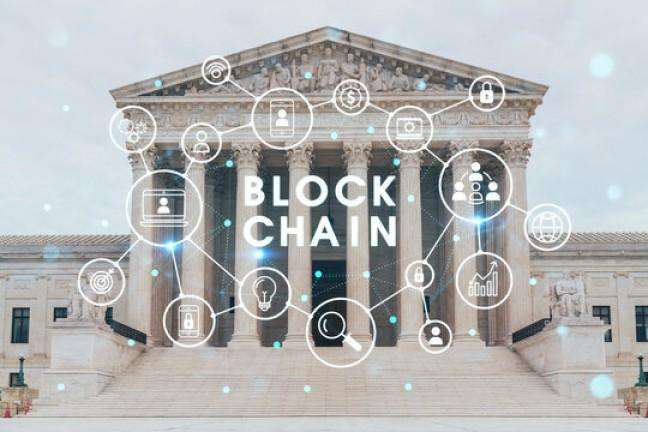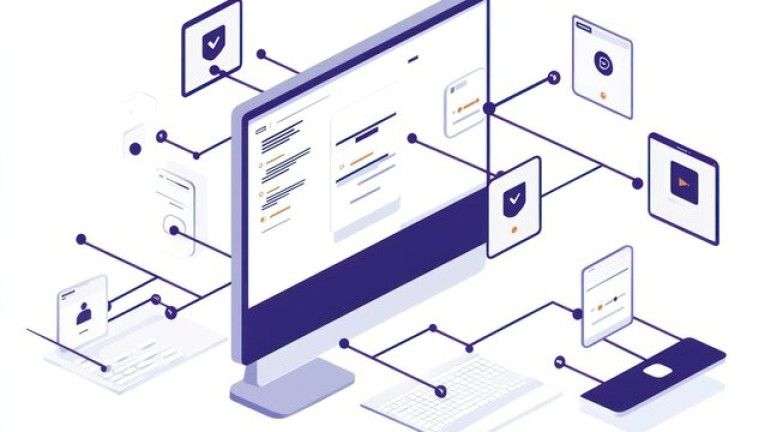Artificial Intelligence (AI) and blockchain are two technologies that have gained immense popularity in recent years, each revolutionizing its respective domain. Blockchain is well-known for its secure and transparent decentralized ledger system, while AI promises to automate tasks, improve decision-making, and revolutionize various sectors with machine learning and data analytics. When combined, AI-powered blockchain could potentially transform industries in ways we can’t yet fully imagine. In this article, I will explore the intersection of AI and blockchain, how they complement each other, and the potential benefits and challenges that come with integrating them.
Table of Contents
Understanding AI and Blockchain
Before diving into how AI and blockchain intersect, it’s important to first define these technologies.
What is AI?
AI refers to the simulation of human intelligence in machines that are programmed to think, learn, and problem-solve. These systems can analyze large amounts of data, recognize patterns, and make decisions based on those patterns. Machine learning (ML), a subset of AI, allows systems to learn from data without being explicitly programmed.
What is Blockchain?
Blockchain is a distributed digital ledger technology that securely records transactions across multiple computers. It eliminates the need for a central authority, offering transparency, immutability, and decentralization. Each “block” in the chain contains a set of transactions, and once a block is added, it is nearly impossible to alter the data within it.
How AI and Blockchain Complement Each Other
At first glance, AI and blockchain may seem to be separate technologies with their own applications, but when combined, they can create a powerful synergy. Here are several ways in which AI and blockchain complement each other.
1. Enhancing Blockchain Security
Blockchain technology is inherently secure due to its decentralized nature, but AI can enhance its security even further. AI algorithms can be used to detect anomalies or fraudulent activities within the blockchain in real-time. Machine learning models can identify patterns that indicate suspicious behavior, such as unusual transaction activity or attempts to breach the network, allowing for immediate intervention and mitigation of potential threats.
Example:
In the case of cryptocurrency exchanges, AI could be used to monitor transactions for signs of market manipulation, fraud, or hacking attempts. AI algorithms could automatically flag these transactions and alert administrators, enhancing security on decentralized platforms.
2. Automating Smart Contracts
Smart contracts are self-executing contracts with predefined rules and conditions that are automatically executed when those conditions are met. Blockchain technology makes smart contracts possible by providing a secure, decentralized platform to execute them. However, integrating AI into the process could allow for more advanced and dynamic contracts. AI can be used to analyze real-world data in real-time, enabling smart contracts to adapt to changing circumstances and make more informed decisions.
For example, in supply chain management, AI could be used to track goods and assess whether contract terms (like delivery times or product quality) have been met. Based on this real-time data, the smart contract could automatically trigger payment or penalties.
3. Optimizing Blockchain Performance
Blockchain networks can become slow and inefficient as they grow, particularly when it comes to transaction processing times and scalability. AI-powered solutions can optimize blockchain performance by predicting network congestion, adjusting transaction fees dynamically, or optimizing consensus algorithms. For instance, AI can be used to predict when network congestion is likely to occur, allowing nodes to adjust their activity accordingly to minimize delays.
Comparison Table: Blockchain Performance without AI vs. Blockchain Performance with AI
| Feature | Without AI | With AI |
|---|---|---|
| Transaction Speed | Slow during congestion | Predictive adjustments for faster processing |
| Network Scalability | Limited by network size | Dynamic scaling based on predictions |
| Consensus Efficiency | Standard protocols | Optimized consensus algorithms |
| Security | Vulnerable to attacks | Anomaly detection with AI |
4. Improving Blockchain Data Analysis
Blockchain generates massive amounts of data that need to be analyzed for various purposes such as auditing, compliance, or decision-making. AI can analyze this data much faster and more accurately than traditional methods. Machine learning algorithms can identify patterns, trends, and correlations in blockchain data, providing insights that would be difficult for humans to discover manually.
For instance, AI could analyze the transactions in a blockchain to identify potential market trends or to detect fraudulent activities. By applying machine learning models to blockchain data, organizations can gain valuable insights and make more informed decisions.
Use Cases for AI-Powered Blockchain
Now that we’ve discussed the potential benefits, let’s look at some real-world use cases where AI and blockchain are already being integrated or could be in the future.
1. Healthcare
In healthcare, the combination of AI and blockchain could revolutionize how patient data is managed and accessed. AI could help doctors make more accurate diagnoses by analyzing large sets of patient data, while blockchain can securely store and share this data across various institutions.
Example:
AI could analyze medical records stored on a blockchain to identify patterns in patient histories, enabling faster diagnosis. If a patient’s history is required for a consultation, blockchain ensures that the records are securely shared with the appropriate medical professionals without the risk of data breaches.
2. Financial Services
In the financial services industry, AI and blockchain can work together to reduce fraud, improve efficiency, and provide better customer service. AI-powered algorithms can detect fraudulent transactions in real-time, while blockchain ensures the integrity of financial transactions.
Example:
In the case of blockchain-based cryptocurrencies, AI can help optimize trading strategies by analyzing market trends and predicting future price movements. This AI-driven insight can be used to automate trading decisions, maximizing profits and reducing risks.
3. Supply Chain Management
AI and blockchain can be a game-changer in supply chain management by providing real-time tracking of goods, automating processes, and ensuring transparency. Blockchain provides an immutable record of the supply chain, while AI can optimize operations by predicting demand, inventory levels, and delivery times.
Example:
AI could predict when a shipment is likely to be delayed based on weather patterns, traffic, or other external factors. This information could be shared via blockchain to ensure transparency and keep all stakeholders informed.
4. Autonomous Vehicles
Autonomous vehicles rely heavily on AI for decision-making and navigation, but blockchain can play a key role in securing the data and communications between vehicles and infrastructure. AI can be used to analyze the real-time data from autonomous vehicles, while blockchain can store the vehicle’s journey history, sensor data, and other critical information.
Example:
When two autonomous vehicles are communicating, blockchain could provide an immutable record of the interaction, ensuring that both vehicles’ data is securely logged. AI could help the vehicles navigate safely by analyzing road conditions, traffic, and other environmental factors.
Challenges of AI-Powered Blockchain
While the potential benefits of AI-powered blockchain are substantial, there are several challenges that need to be addressed.
1. Data Privacy and Security
Although blockchain is known for its security and transparency, there are concerns about data privacy, especially when combining it with AI. Sensitive information stored on a blockchain could be accessed by unauthorized parties, potentially leading to privacy breaches.
2. Scalability
Blockchain technology, especially in public blockchains, faces scalability issues. The addition of AI-powered systems to blockchain could further strain the infrastructure, making it difficult to handle large amounts of data and transactions in real-time.
3. Ethical Concerns
AI systems are only as good as the data they are trained on. If the data is biased or incomplete, AI could make decisions that are unfair or discriminatory. The integration of AI with blockchain could amplify these issues, especially when it comes to autonomous decision-making.
Future of AI-Powered Blockchain
As AI and blockchain continue to evolve, their integration will likely become more sophisticated. The future could bring advancements such as more secure, scalable, and efficient blockchain networks powered by AI. Additionally, AI could help blockchain reach new heights of usability by automating decision-making processes, enhancing security, and enabling more complex use cases.
Conclusion
AI-powered blockchain is a promising fusion of two groundbreaking technologies that could transform industries ranging from finance to healthcare. By enhancing blockchain’s security, optimizing performance, and enabling smarter smart contracts, AI can help blockchain achieve its full potential. However, challenges such as data privacy, scalability, and ethical concerns must be addressed to realize this vision. As both technologies continue to develop, the possibilities for AI-powered blockchain are vast and exciting.





